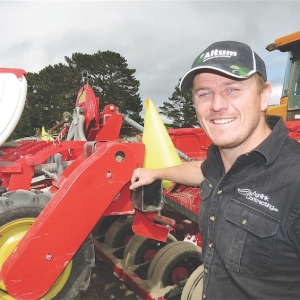Chairman John Wilson says he’s “very comfortable’ that 1 in every 5kgMS produced on New Zealand farms end up in the Chinese market.
Speaking last week at the BNZ Northland Dairy Development Trust Conference in Whangarei, Wilson was questioned whether it was safe to rely so heavily on one market.
Wilson pointed out that Fonterra was also sending a lot of dairy products into the Middle East and North Africa. But he was comfortable with export numbers into China.
“So we have no concern around the numbers we are sitting at the moment,” he told the conference.
He says Fonterra has “a very genuine exposure” in China.
“The supply/demand figures (in China) are real, the growth figures are real,” he says.
“What you are seeing is a dramatic transformation of an economy of 1.3 billion people.”
Fonterra’s business in China includes ingredients, food service, consumer business and milk production.
Last year the co-op exported 400,000 tonnes of milkpowder. Over 50% of pizzas in China are topped with Fonterra cheese supplied by its ingredients business. Wilson says the ingredients business is growing by 28% annually.
Recently Fonterra launched its Anchor UHT milk and Anmum infant formula brands in China. Fonterra also has dairy farms in various parts of the country.
Wilson says authorities in China expect Fonterra to invest across the dairy industry.
‘When we are in China talking to ministers, at both national and state council levels and regulators, they expect Fonterra to invest across the dairy sector in China.
“And importantly around what we are doing around farms to improve milk quality, animal husbandry, growing crops and providing scholarships for rural students
“So we are seeing that our investment across China, in the first instance to promote ingredients out of New Zealand, is highly valued.”
Wilson said milk production in China, this year, is down about 20% - mainly due to foot and mouth and other diseases. Some smaller farmers have also moved out of farming. Fonterra’s information is based on discussions it has had with China’s two main dairy processors – Yili and Mengniu.
Wilson says the drop in Chinese milk production means greater demand for products from New Zealand.
Fonterra is also continuing to work in China to improve its branding after the false botulism scare. Recently it hosted a group of Chinese journalists who visited the co-op’s factories and its product testing facilities at Te Rapa horticulture or environmental studies.
“So 71% of New Zealand’s overseas export receipts, excluding tourism, rest upon 1.18% of our intellectual capital creation,” he warned.
What’s more, some of those 74 doctorates were gained by students from overseas who did not stay in New Zealand on graduation. In two of the years there wasn’t a single New Zealander among them.
Crown Research Institute recruitment figures are further evidence of the mismatch between scientist supply and demand, says Hay. CRIs employ two-thirds of the nation’s publically-funded scientific researchers and 57% of those with doctorates now come from offshore.
“Only a few of them are returning Kiwis…. I flag that as another scandal,” he told the NZGA audience of farmers, scientists, consultants and tradespeople.
Hay stressed his presentation was his personal opinion and not that of the Minister or Ministry –given his role as chairman of the Ministry of Business, Innovation and Employment (MBIE) Science Board.
The impact of such a shortage of intellectual capital, and indeed problems with agricultural research funding, likely won’t be felt until decades later it seems. Both Rowarth and incoming Association president Warwick Lissamann presented Alston et al’s finding that peak benefit on farm from agricultural R&D is typically 24-years after the research was conducted.
Lissamann also sought to torpedo some common misconceptions about farming, presenting data that showing the industry has the highest rate of productivity gain of any in New Zealand, and that an aging farming community is a barrier to innovation.
“We have to stop focussing on succession for farmers in their 50s and 60s and encourage them to innovate because this is the time they should be doing it,” he said.
Older farmers are generally more financially secure, have larger businesses, and are better educated in the widest sense, hence, as overseas research has shown, are best placed to innovate, he explained.
• More from the conference in Management, p33-34

















